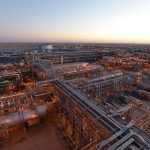Six of the UK’s nine nuclear reactors are currently offline for maintenance, operator EDF has confirmed.
It means the UK is missing 58% of its nuclear power capacity, with 3.5GW of the total 6GW temporarily out of action, Nuclear Industry Association (NIA) said.
The UK was, on Wednesday, relying on gas for 59% of its electricity, with wind providing 15%, nuclear 6% and the rest coming from biomass, solar, and coal.
Industry argues the outages and the UK’s ageing fleet make the case that the UK needs more nuclear plants, after the government last week detailed plans to reinvigorate the industry.
But sceptics caution it will take several years for new nuclear to come online, with existing projects beset by delays and ballooning budgets.
The outages of four reactors – two at Heysham and two in Hartlepool – were unplanned, prompted by a part failure in the boiler pipework at Heysham 1 in Lancashire.
An EDF spokesperson said: “Following the failure of part of a steam valve in the Heysham 1 boiler pipework, EDF has taken a proactive decision to temporarily take the station offline, as well as its ‘sister station’ at Hartlepool that has the same valve design.”
“This enables engineers to safely conduct inspections and for us to find a solution with the valve manufacturers.”
The issue is not related to the nuclear technology itself, and older plants are often shut down as a precaution to inspect potential problems.
EDF expects all four reactors across both sites to be back online by early February.
Two further reactors – one at Torness in east Scotland and one at Heysham 2 – have been shutdown for planned maintenance, which happens a few times a year for things like refuelling or inspections.
These two are due to fire up again before the end of the month.
Be the first to get Breaking News
Install the Sky News app for free
The future of UK nuclear power
Nuclear provides zero emission and reliable, though expensive, electricity.
Nuclear is expected to play an important role in securing a clean and secure energy future for the UK, though opinions on how great a role vary due to concerns over costs and delays.
Nuclear has provided around 20% of the UK’s electricity since 2000, but eight of the existing reactors are due to retire in the 2020s. Two new large sites, Hinkley Point C and Sizewell C, are in the pipeline.
Last week the government unveiled a nuclear roadmap, which included proposals to consider a further large-scale plant, and for new, smaller reactors whose technology is still being developed.
Tom Greatrex, chief executive of the Nuclear Industry Association said: “On cold days like today, when power demand is high, the UK is heavily reliant on burning gas.
He added: “It’s essential that decisions on a new fleet of large and small stations are taken swiftly so we can maintain nuclear’s contribution to energy security in the years ahead.”
Please use Chrome browser for a more accessible video player
Jess Ralston from energy and climate think tank ECIU said: “The government’s new nuclear ambitions could help bolster the UK’s energy security, but not seriously for a decade or more, even before you factor in possible delays and cost overruns.”
Insulating homes, which reduces power demand, and boosting renewables, would be a faster route to boosting energy independence, she said.






















